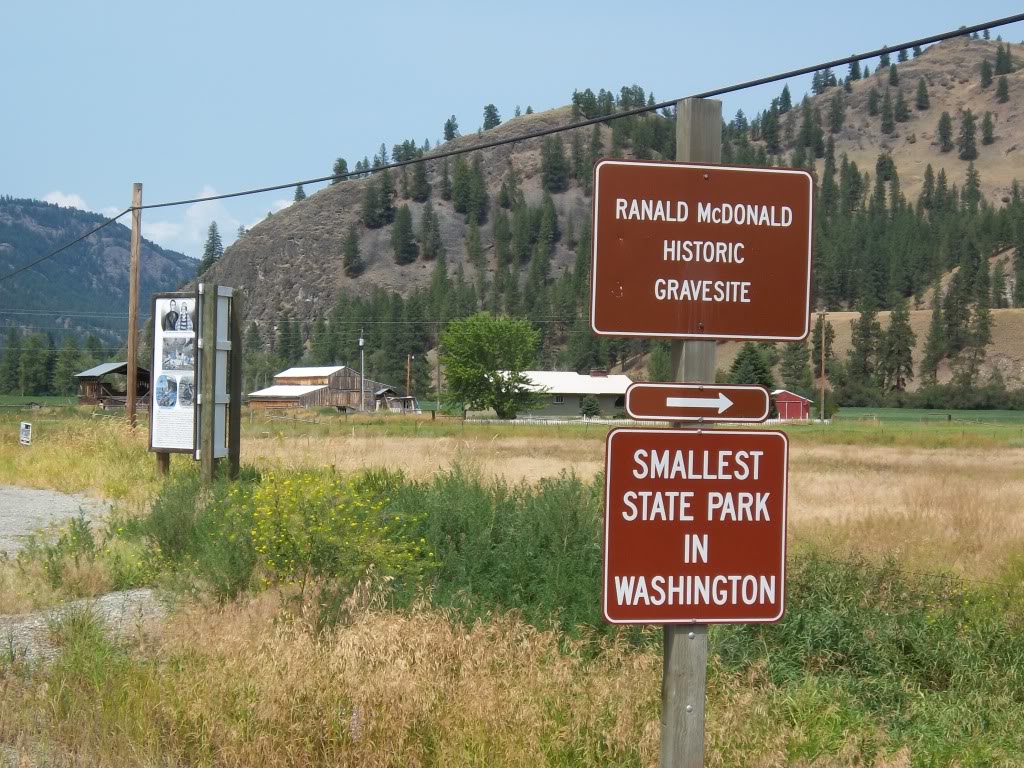Hidden history in Ferry County
It probably won’t be your first choice for a Washington state park family vacation. It might not even be in your top 100. However the Ranald MacDonald Grave Heritage Area definitely warrants a visit if you find yourself traveling near the U.S.-Canadian border in Ferry County.
Ranald MacDonald’s gravesite is located in a Native American cemetery just off County Highway 501/Customs Road overlooking the Kettle River. Dubbed “the smallest state park in Washington,” it’s technically a satellite of Osoyoos Lake State Park over 40 miles west of the gravesite.
Now before the kids start asking for happy meals, know that Ranald MacDonald is not related to the redheaded clown we’re all familiar with. In fact, you won’t find a pair of golden arches for 50 miles.
So who is Ranald MacDonald and why does his gravesite hold such distinction? The simplest answer is that MacDonald is the first American to teach English in Japan in the mid 1800’s, however leaving the story at that would be a disservice to a storied life filled with curiosity, adventure, risk, and reward.
 The son of a Scottish immigrant and a Chinook Indian princess, MacDonald walked away from the life of a banker at age 21 and joined the crew of a whaling ship. Throughout his travels, however, his desire to visit Japan and break through the “bamboo barrier” never relented.
The son of a Scottish immigrant and a Chinook Indian princess, MacDonald walked away from the life of a banker at age 21 and joined the crew of a whaling ship. Throughout his travels, however, his desire to visit Japan and break through the “bamboo barrier” never relented.
Remember, this was 1848. For over 200 years, no Japanese could travel abroad and almost no foreigners were allowed inside. Those who had done so were reportedly executed immediately, but MacDonald had become so captivated that he was willing to risk death to expose their culture to western civilization.
MacDonald’s opportunity finally came from Captain Lawrence B. Edwards, a man Ranald had developed a sort of teacher-pupil relationship several years prior when MacDonald was learning how to sail and was still – quite literally – wet behind the ears. MacDonald struck a deal in which Captain Edwards would give him a small boat in exchange for MacDonald’s share of the whaling profits they had already made.
MacDonald bade his friend goodbye and sailed off toward the rocky shores of Japan’s Rishiri Island, convinced that despite the bloody stories he’d heard about the Japanese, he believed they would have compassion for a sailor in distress. Thankfully, they did. MacDonald capsized his own boat to get their attention and the responding Japanese took him ashore, cared for him and sent him to the Shogun’s palace.
Fast-forward to 1849 and MacDonald had not only managed to stay alive (albeit in prison for most of the time) but thrive in the land of the rising sun, learning Japanese, teaching English, smashing through cultural misconceptions, and paving the way for Commodore Matthew Calbraight Perry to formally open U.S. relations with the Japanese in 1853.
In the years following his adventure in Japan, MacDonald traveled to China, India, Australia, Europe, finally returning to the United States. Settling at old Fort Colville (a Hudson’s Bay Company outpost where his father had previously served as Chief Factor), he died in 1894 in the arms of his niece; his final words said to be, “Sayonara, my dear. Sayonara.”
A stone monument in Astoria, Oregon, marks the place of MacDonald’s birth, and another marks his grave in Ferry County. The slight-but-rocky incline to reach the monument may appear daunting to anyone driving a minivan or a motorcycle, however it should at least be considered as an opportunity to pay homage to the native Washingtonian who succeeded in making the breadth of the great Pacific Ocean just a little smaller.

